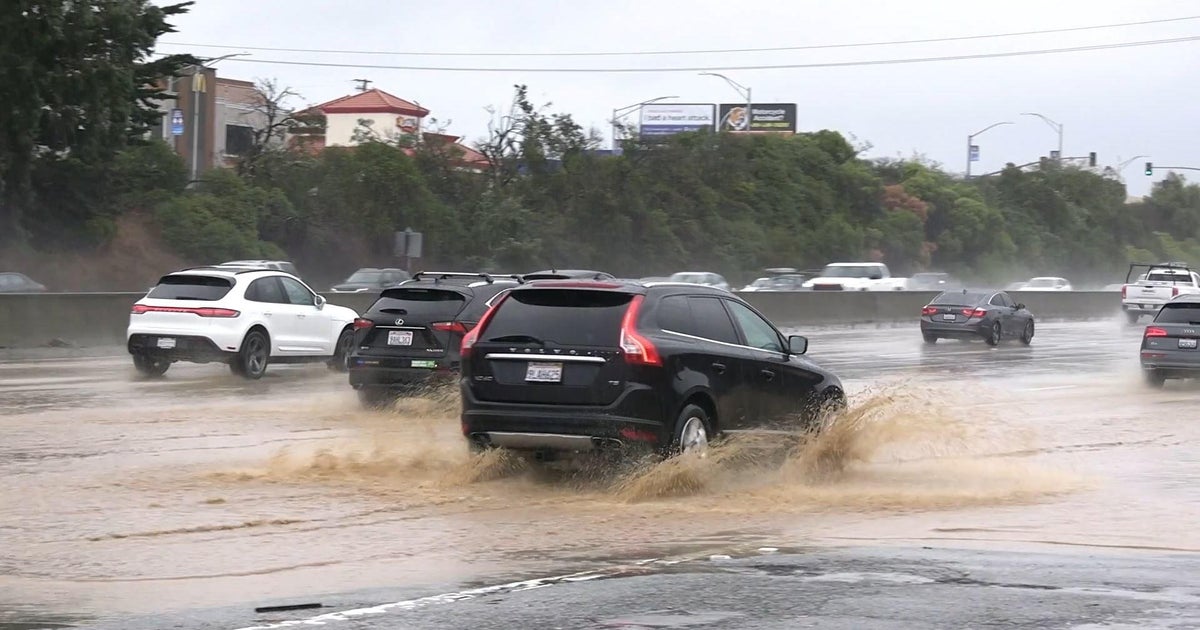San Francisco School District Votes To Cover Up Mural Without Painting Over It
SAN FRANCISCO (KPIX 5) -- The San Francisco Unified School District Board decided Tuesday night to backtrack on the decision to paint over a controversial mural following a major public backlash.
The vote was 4-3 as the board decided the artwork will not be painted over. Instead, they will proceed with a plan to hide parts of the mural with panels or other material. Opponents of this plan said they did not consider the new plan a compromise, but rather a reaction to public outcry from across the political spectrum.
The board also voted to digitize the mural so art historians and students can access it.
"We're here tonight because [the school board] realizes the kind of pressure both locally and nationally has made this board a laughing stock in the United States," said Lope Yap, Jr., Vice President of the Washington High School Alumni Association. Yap said his group is still opposed to any plan to cover up or paint the mural, and is still considering a lawsuit.
Some Native American members who attended the contentious school board meeting were upset that the board went back on its promise to paint the mural over.
"Do the alleged lessons in the murals to 'not forget' remind anyone about broken treaties?" said Mary Travis Allen, a member of the Mayanga and Seneca Nations.
The school board wanted to cover up the murals entitled "Life of Washington" at George Washington High School because students say its images of slaves and indigenous people are painful to walk past every day.
Painted on the walls at the school's main entrance, the panels depict slaves toiling at Washington's home in Mount Vernon. Another panel shows the First President directing the Westward Expansion as a murdered Native American lies at his feet.
The artist, Victor Arnautoff, was a radical, avowed Communist who was determined not to gloss over the life of Washington. Instead, he chose to include the cruelty of slavery and the slaying of Native Americans to remind art viewers of the nation's ugly history.
"This was a very conservative time when you wouldn't want to make Washington look like a bad guy, and he was able to," said Yap, Jr. "In fact, historians all said we don't even know how he pulled this off."
But despite the anti-slavery and anti-colonialism messages, the district says the images themselves are disturbing and should be removed or at least covered up.
"I think we all agree that the murals depict a history of the country that is hard to see," said board president Stevon Cook. "And everyone agrees that that history is racist. I think where we disagree is if it's appropriate for a school site."
In response to the district, actor Danny Glover joined a group of African American leaders to urge the district to reconsider covering the murals up. Glover, who attended Washington High, says when he made the movie "The Color Purple," some people objected to its portrayal of African Americans as well.
"The fact is that art has to make us feel uncomfortable," Glover told reporters. "That's what art does. The responsibility of art is to make us feel uncomfortable. You know, the great artists are the ones who made us feel uncomfortable."
President of the SF Chapter of the NAACP Dr. Amos Brown believes the district is misguided in trying to censor the images of slavery and genocide. He says covering them up will be ignoring the lessons of the past.
"People are trying to wipe out, forget about, sweep under the rug that history." Dr. Brown said. "If we don't remember it, we will never deal with the present."
Glover had already spoken out about the plan to paint over the mural earlier this week.
"Sometimes art is the only reflection of how we can talk about this," Glover added. "And to have brilliant art being covered up and, really, blinding us or hiding that fact away. That's absurd."
In June, the board voted unanimously to destroy the mural by painting over them, which sparked the initial outrage.
At one point during Tuesday night's meeting, school board member Allison Collins proposed an amendment that would include the possibility of removing the mural from the school and "relocate it to an offsite location." The amendment was voted down.
KPIX 5's John Ramos and Joe Vazquez contributed to this report.



